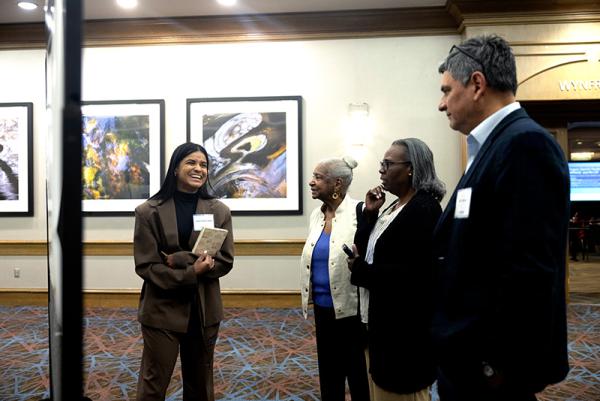CEAL Annual Meeting Fosters Connection to Strengthen Research
In March 2025, the Community Engagement Alliance (CEAL) program held its annual meeting, convening CEAL teams to discuss research and community engagement, successes, and impact. This year’s CEAL Annual Meeting (CAM) took place in Birmingham, Alabama. The 179 participants in attendance represented a wide range of academic and community-based organizational affiliations spanning CEAL programs. A networking event at the Birmingham Civil Rights Institute was hosted by the University of Alabama at Birmingham.
While the Community Engagement Technical Assistance Center (CETAC) and NIH coordinated planning, logistics, and facilitation efforts, the research teams — including academic and community partners — took center stage. Research team members across CEAL programs volunteered to serve on the CAM Planning Committee; co-developed the meeting agenda; and served as speakers, moderators, and facilitators.
The two-day meeting focused on promoting promising practices, fostering collaboration, and strengthening research. The first panel examined ways to enhance quality in community-engaged research (CEnR), sharing strategies and case studies on increasing community involvement in public health research. In the second panel, CEAL Consultative Resource leadership moderated a discussion on effective communication and collaboration in research. A series of program-specific sessions allowed research teams to share overviews of their projects within the respective CEAL program, impacts, and lessons learned.
Four breakout sessions looked at a range of topics spanning CEAL. The first focused on strategies to increase the reach of CEnR, exploring ideas for building trust, recruiting and retaining communities in research, and investing in the next generation of CEnR. A subsequent session examined the critical role of community health workers (CHWs) and the importance of strengthening the CHW workforce. Another highlighted approaches for measuring and addressing social determinants of health, and a fourth explored opportunities for cross-collaboration to achieve sustainable, measurable outcomes.
Participants were inspired by the breakout sessions to devise new ways of working together. One area for future enhancement may include reshaping existing working groups or establishing new cross-cutting groups that explore commonalities across teams to better collaborate. Another idea was developing a series of publications or products stemming from the breakout sessions, providing another opportunity for community–academic partnership.
In a CEAL evaluation session, CETAC facilitated a discussion on and requested input in developing the CEAL Evaluation Plan. Attendees obliged by sharing examples of outcomes and impacts. Key themes included bolstering the CHW workforce, sustaining relationships with communities, and community capacity building.
Participants left the meeting with actionable items to further their research, such as plans to connect with other research teams, share resources, and bring learned promising practices back to their own programs. Looking ahead, attendees expressed interest in carrying the engaged discussions forward into more opportunities for exchanging ideas, sharing insights, and increasing collaboration in the months to come.

Meeting participants in discussion during a poster exhibit at the 2025 CAM parallel session on community-engaged maternal health research.
Last updated: May 1, 2025